A Critical Look at ‘Uranium: Twisting the Dragon’s Tail’
This PBS documentary can’t seem to make up its mind about whether nuclear power is a manageable risk or an untamable beast. It really shouldn’t be that confusing.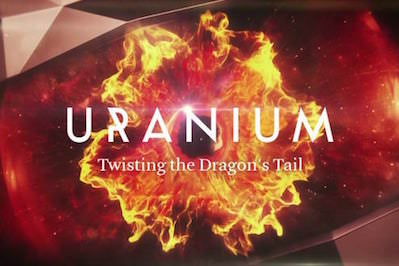
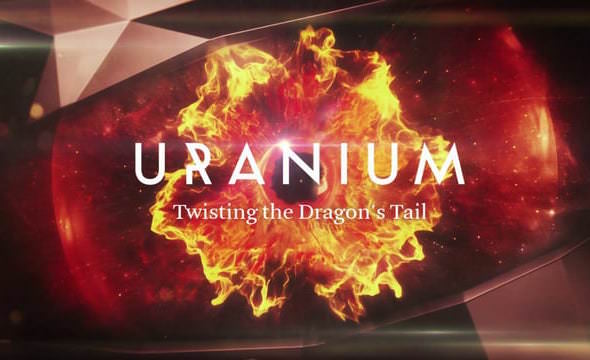
PBS
A week or so before the 70th anniversary of the atomic bombing of Hiroshima, I watched a curious documentary on PBS. It was called “Uranium: Twisting the Dragon’s Tail.” You can see it here. The presenter was a physicist named Derek Muller. What’s odd is that Muller concludes that nuclear power is not the way to go, but the way the film was edited, the message is the opposite: that nuclear power is relatively safe and that its technical problems are at the point of being solved.
Let’s start with the end. Muller speaks from a village near Fukushima, Japan, site of a 2011 nuclear power plant meltdown after a strong earthquake and ensuing tsunami. He says, “What should we do with uranium? As a physicist I’m tempted to say it’s such a great source of power. It has such incredible energy density and so many benefits that way. How can you ignore it? But after studying it, after searching the world and following the story of uranium, the feeling that I’m left with is that it’s not ready to take over; and seeing how far renewable energy has come, that suggests to me that there are alternatives these days and that we don’t need to go with uranium. We don’t need to risk another place like this.”
In the next second, though, you hear him undercutting all this by talking about medical uses for uranium and the promise of “next-generation” nuclear power plants. The whole film is like that, going back and forth.
Derek Muller was born in Australia. I couldn’t find much about him via Google, but in an audio interview at a website called The Token Skeptic, Muller said he has a “background in engineering and physics from a university in Canada” and holds a doctorate in physics from the University of Sydney, where, he said, he was “looking at how to make films to show physics to students.”
He starts the program in an old silver mine in the Czech Republic, where he shows us pitchblende, a material that miners over the ages considered worthless. Now we know that pitchblende is a primary ore-mineral source of uranium. Muller puts a Geiger counter up to some pitchblende, and we see the monitor telling us it’s sending out radiation many times more than normal background levels.
He talks about how sexy radium became for a time about a century ago and how you can still take a radium bath in one so-called health resort in the Czech Republic. (He doesn’t get into the hideous cancers suffered by radium watch-dial painters in New Jersey in the 1930s.)
When he starts talking about nuclear power, you see him in Pripyat, Ukraine, the workers city near the Chernobyl nuclear reactor that exploded nearly 30 years ago. The city of 50,000 was abandoned after the power plant suffered a “catastrophic emergency.” Muller and a local assistant (and camera operator) go into the old hospital at Pripyat, into the emergency room where firefighters had been brought and down into the basement, where the clothing of the doomed workers is still lying about. He examines a fireman’s boot that is emitting 2 millisieverts of radiation an hour, 10,000 times normal background radiation. In another room there’s so much radiation that the monitor just reads “overload.” After four minutes in the basement, they leave.
Muller explains that Pripyat is contaminated with cesium-137. That element has a half-life of 30 years, so it will take hundreds of years before all of the dangerous radioactivity there is gone.
Then the camera sweeps to the ruined Chernobyl plant. Muller explains that inside is something far more long-lived than the cesium, uranium-238. This uranium isotope has a half-life of 4.5 billion years. He explains it will last longer than the Earth itself and that the Soviets had to cover it with a concrete sarcophagus to stop the intense radiation. The problem is that 30 years of weather and such are taking their toll, and the sarcophagus is starting to crumble. So a new sarcophagus is being built that will be slid over the first to protect the world for the next 100 years.
Then Muller stops the narrative. Say what? Are engineers just going to put a new sarcophagus on top of the old one every hundred years, 45 million times? There’s also no mention that the new container is behind schedule because of a lack of funding and that this crumbling facility is in the troubled Ukraine, where a war could sweep into the area with doomsday results. Muller concedes that the new container is just a “temporary solution” but then jumps to a segment about how uranium is used to detect disease and save lives.
We meet professor Geraldine Thomas, a molecular pathology specialist in the department of surgery and cancer at Imperial College London. She states categorically that there were 28 deaths at Chernobyl from acute radiation poisoning, with 15 people dying later of thyroid cancer — “and that’s all.” She says, “More people have died from falling out of bed in the U.K. every year than have died for the effects of Chernobyl.”
We hear not a word about alternate estimates of radiation deaths resulting from the Chernobyl accident. Greenpeace in 2006 issued a report claiming that the disaster caused a quarter of a million cancer cases and 100,000 deaths.A 2010 book written by Russian and Belarusian scientists and published by the New York Academy of Sciences said there already had been 985,000 cancer deaths from the accident.
Thomas goes on to say that the exclusion zone around Chernobyl is now habitable, and Muller then visits an old couple who have moved back to their house in Pripyat. Thomas is shown again saying that “a small amount of exposure is perfectly OK” and “Our bodies have found ways to deal with low-dose radiation.” She elaborates: “We are extremely well-adapted to a low-dose radiation environment.”
Then we’re off to Japan and an abandoned village near the damaged Fukushima nuclear plant. Muller talks about the 100,000 people who were evacuated and the high death toll among them later resulting from depression and suicide. The film goes back to Thomas, who implies that the evacuation, not the radiation, was the disaster. Muller says the radiation death toll at Fukushima so far is zero.
Muller speculates for a while that nuclear power might be finished, but then he talks about the world’s immense energy needs. He notes that 400 nuclear plants are currently operating and 70 more are under construction and that none of them emits carbon dioxide. He wonders aloud if this is “green” or if there is one glaring problem with nuclear power that robs it of that virtue.
You then see Muller in front of that problem, a series of 20- or 30-foot-high storage containers for nuclear waste. He explains that there are 72,000 tons of nuclear waste in the U.S. and that “some of this waste must be stored for 100,000 years. The safety and security of this waste remains the responsibility of a company, a board of directors and shareholders who will take responsibility for 100,000 years.”
At this point Muller should have stopped, looked us in the eye and started screaming — or at least told us with violent emotion that this is madness. No corporation is older than a few hundred years. How in blazes can we have confidence that a corporation can last 100,000 years? That is insanity. What country’s government has been around continuously for even 1,000 years?
Instead the film jumps to Tennessee. With the Sequoyah Nuclear Plant in the background, Muller interviews Leslie Dewan. Miller asks, “What if there was a way to use this waste?” What if it could power a next generation of nuclear power plants?
Dewan says, “My reactor can take that long-lived waste and break it down and extract all its remaining energy; and if you take all of that waste and put it into these reactors, you could power the entire world for about 72 years. … It uses a liquid fluoride salt as fuel; if you have an accident, it can shut itself down safely. Our reactor can run entirely on nuclear waste, it can’t melt down and it’s cheaper than coal.”
Wow, way cool. Our prayers are answered. Nuclear waste isn’t a problem anymore, it’s just a great big source of energy.
But wait a minute. Who is Leslie Dewan? Why aren’t we reading about her every week in The New York Times and The Wall Street Journal? A couple of years ago Time magazine did call her one of the “30 People Under the 30 Who Are Changing the World.” Yet a look at her resume shows she got her Ph.D. in nuclear science and engineering just two years ago. When she talks about “my reactor,” it’s a stretch. Her 4-year-old company, Transatomic Power, plans to build its first demonstration reactor in 2020.
Dewan may be the next combination of Albert Einstein and Nikola Tesla (and I hope she is, because no one knows how to keep nuclear waste safe for thousands of years), but the record so far of so-called fourth-generation reactors is not encouraging. Japan built one 20 years ago, and a problem with the sodium salt coolant it used caused a massive fire, and the plant was closed. It will never be used to create power. Instead, last year it was slated for permanent “research.” Fourth-generation reactors are basically theoretical at this point, yet “Twisting the Dragon’s Tail” gives the impression that a safe nuclear reactor that eats atomic waste is just on the horizon.
Then Muller does another spiral. With the Japanese town near the Fukushima plant as his background, he gives the message I quoted at the beginning: His feeling is that nuclear power is not ready to take over and that renewable energy is a good alternative.Muller ends the film by looking at his radiation counter. He has featured its crackling noises on and off throughout. He has now been everywhere from Marie Curie’s lab to the basement of the Pripyat hospital. How much has he been exposed? Let’s hear a mental drum roll. His radiation meter has registered just above 10 percent more microsieverts than what each of us normally gets each year. He concludes “My journey was worth the risk.”
Well, his journey might have been worth that risk, but the film lacks a firm conclusion. Visually and emotionally, it’s all over the place. It should have been more like “Jurassic Park,” featuring brilliant techies that construct a huge edifice while not noticing the shaky foundations. Scientists and engineers have loosed 400 dragons on the world without any idea of what to do with tens of thousands of tons of ultra-deadly poop. They twisted the dragon’s tail assuming that future experts would deal with the consequences sometime, somewhere, somehow.
Independent journalism is under threat and overshadowed by heavily funded mainstream media.
You can help level the playing field. Become a member.
Your tax-deductible contribution keeps us digging beneath the headlines to give you thought-provoking, investigative reporting and analysis that unearths what's really happening- without compromise.
Give today to support our courageous, independent journalists.
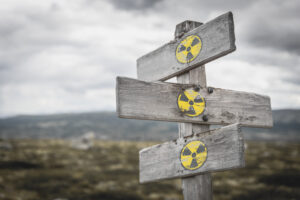
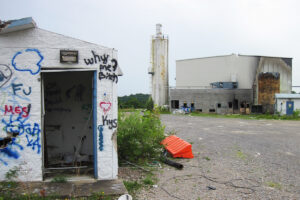
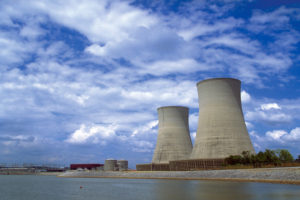

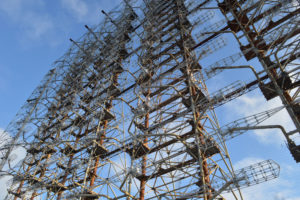

You need to be a supporter to comment.
There are currently no responses to this article.
Be the first to respond.